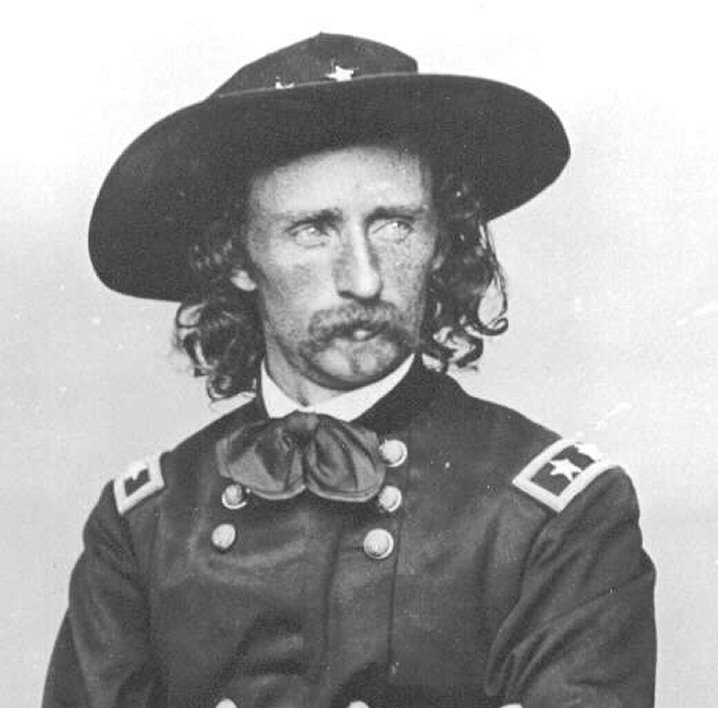
George A. Custer
U.S. Army generals Sherman and
Sheridan envisioned a new campaign against the prairie
tribes. Sheridan suggests they start by attacking the
Cheyenne, and Sherman agrees. Sheridan enlists Custer into
the scheme. Custer, anxious to erase the memory of earlier
failures, eagerly signs on.
Sheridan plans
for Custer to do most of the dirty work. They set off in
winter, and soon his Osage scouts located a Cheyenne village of
fifty lodges. He had no way of knowing this was Black
Kettle's band, encamped on the Washita River, well within the
reservation boundaries.
click here for more
At dawn on November 27, as a white
peace flag flew above the chief's teepee (two days short of the
fourth anniversary of the Sand Creek massacre), Custer's buglers
sounded a muffled charge with their frozen lips and sent 600
mounted soldiers galloping into the camp, guns blazing. The killing
of defenseless women and children went on for a half
hour.
In a report to
his superiors, Custer claimed to have killed 103 warriors,
including Black Kettle, whose scalp now hung on the lance of an
Osage scout. Cheyenne survivors said only eleven warriors
were killed. The rest were women and children and old men,
proof that more often than not, history is written by the
victor.
Related People
Related Events
Related Flashpoints